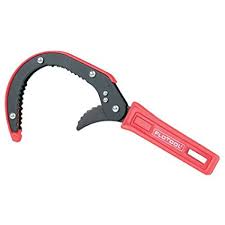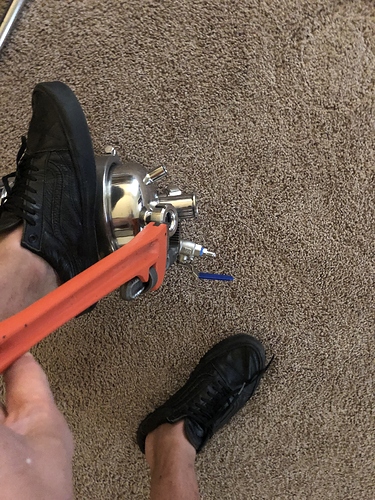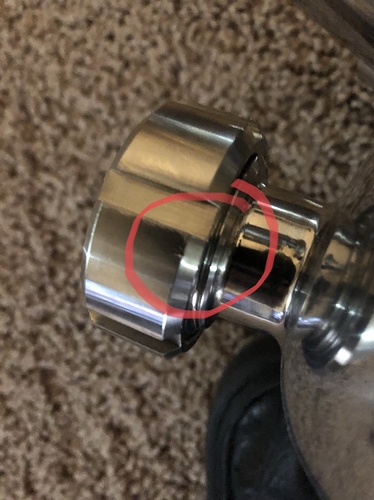OK, first post.
I do not have an industrial sized system. All metal pieces are small enough to be hand carried. My CLS sight glass leaks. I know that a DIN wrench is the proper tool to tighten these. I don’t own a proper DIN wrench, but I use something very similar, called a jaw-style wrench (specifically Hopkins 10631). It looks like a cross between an oil filter tool, channel lock pliers and a pipe wrench.

I understand what has to be done to repair the leak. I am mostly interested in hearing more about the mechanics of the repair. Round metal tanks are hard to grip. Every time I attempt to tighten my sight glass, it is a wrestling match. What process and aids do you use to properly seal and tighten? How would you secure a round, open ended, tank?
I have considered placing the tank over something solid, like a fence post, but am worried that this will damage the interior of the spool. I am particularly concerned with the sharp edges where the flanges are secured. I don’t want to ding that edge and compromise its sealing ability. How do you hold your tank securely?
Now, to the sight glass, and its port. The sight glass is a round, screw on unit. sealing material is provided with it. This provided sealing material should theoretically be effective at securing the port, all by itself, assuming that sufficient torque has been applied.
However, trying to torque this sufficiently has proven to be quite difficult. Every other threaded connection in the CLS is sealed using PTFE tape. Has anyone used PTFE tape on the sight glass threads? Should taping these threads be even considered? Does anyone have any good suggestions, advice, comments?

